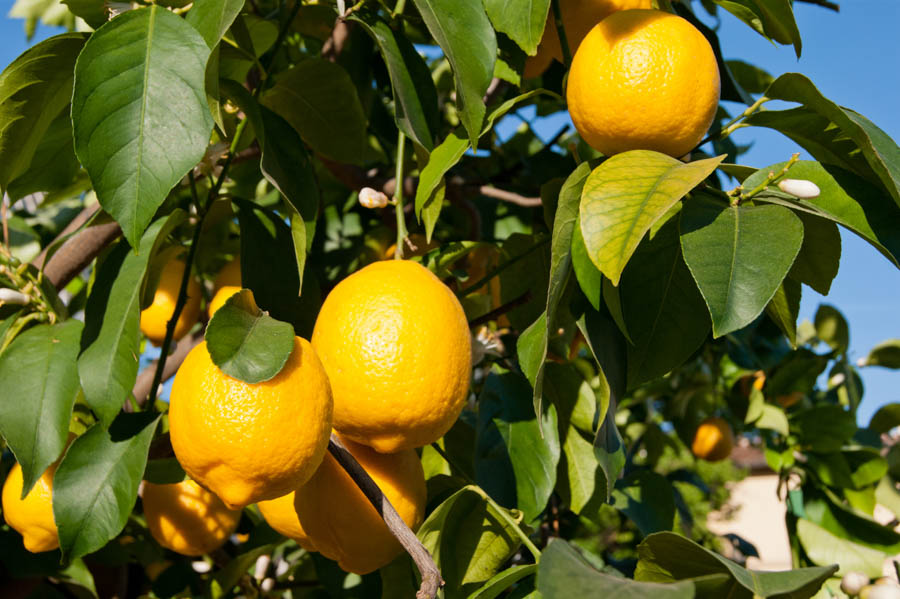GardenZeus Quick Tips: Harvesting Lemons

Gardeners in mild winter areas of California have much to enjoy in December: holidays with family and friends, refreshing stretches of rain (at least in most years) and the beginning of the lemon harvest. The majority of lemon varieties mature from winter through summer. Meyer lemons are generally harvested from November to March.
Harvest lemons by gently twisting at the base, or cutting using hand pruners. For fruits too high to reach, use appropriate, stable ladders or climbing gear. Injury is common when using stools, chairs, or other improvised supports for reaching upper fruits.
Pole fruit pickers may allow harvest of upper fruits from the ground, but tend to tear stems and may damage trees; if you find yourself needing a fruit picker, consider reducing the canopy of your citrus to keep fruit closer to the ground.
Lemons do not ripen after being picked. They are ripe when juicy. Sample a fruit or two to judge ripeness. Once ripe, lemons do not hold well on the trees. When lemons become overripe they soften, begin to rot on the tree, and/or fall from the tree. Once lemons are ripe, GardenZeus recommends picking the fruit and then freezing the juice for later use. Frozen lemon juice can last for four months if properly stored.
Gardeners “burdened” with a large supply of ripe lemons should canvas cookbooks and cooking blogs for recipes requiring copious quantities of lemons, such as tarts and cheesecakes. Or, placed in a gift bag and tied with a ribbon, homegrown lemons make an ideal hostess gift.
Don’t know your GardenZeus climate zone? Click here.
Getting Started With Citrus: Purchasing and Placing Your Citrus Trees